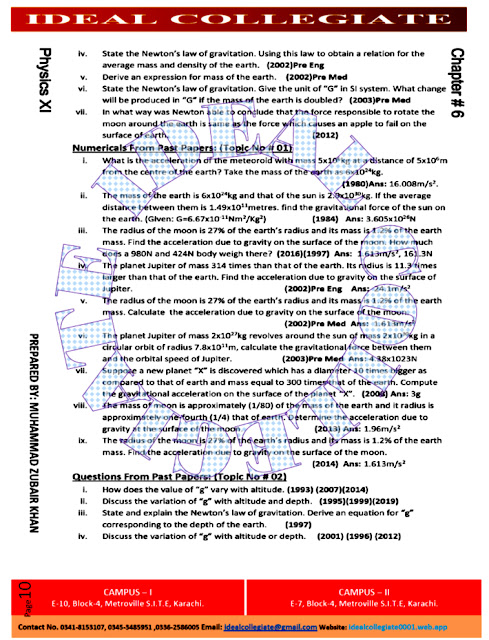-------------------------------- CONCLUDING REMARKS ------------------------------------------------
Gravity is a fundamental force that affects everything in the universe, from the smallest subatomic particles to the largest structures in the cosmos. It is the force that keeps us anchored to the surface of the Earth and governs the motion of planets and stars in the universe. The concept of gravity can be traced back to ancient times, but it was Sir Isaac Newton who first formulated a mathematical law describing its behavior.
Newton's law of gravitation states that the force between two masses is proportional to the product of their masses and inversely proportional to the square of the distance between them. This means that the force of gravity gets weaker as the distance between two objects increases. For example, the force of gravity between the Earth and the Moon is weaker than the force of gravity between the Earth and the Sun because the Moon is much closer to the Earth.
The mass of the Earth is a crucial parameter in many areas of physics, including astrophysics and geophysics. It determines the strength of the gravitational field on the surface of the Earth, which in turn affects the weight of objects and the behavior of fluids in the atmosphere and oceans. The average density of the Earth is also an important parameter, as it provides clues about the composition and structure of the planet's interior.
The mass of the Sun, on the other hand, is a critical parameter in astronomy and cosmology. It is the most massive object in our solar system, and its immense gravity is responsible for holding the planets in their orbits. The mass of the Sun is also used to determine the mass of other objects in the universe, such as stars and galaxies. The study of gravitational interactions between objects is an essential tool for understanding the structure and evolution of the universe.
Gravitation is the force by which a planet or other body draws objects toward its center. It is one of the four fundamental forces of nature, along with electromagnetism, the strong nuclear force, and the weak nuclear force. Sir Isaac Newton's law of gravitation states that every point's mass attracts every other point's mass by a force that is proportional to the product of their masses and inversely proportional to the square of the distance between them. This law is fundamental to our understanding of the motion of planets and stars in the universe. The mass of the Earth is approximately 5.97 x 10²⁴ kg, with an average density of 5.5 g/cm³. The mass of the Sun is much larger, at approximately 1.99 x 10³⁰ kg. Its immense gravitational pull keeps the planets of our solar system in orbit around it.
Weightlessness is a condition that occurs when an object or a person is in a state of freefall, and the force of gravity is canceled out by the inertial force. Astronauts in orbit around the Earth experience weightlessness because they are constantly falling toward the Earth due to its gravitational pull, but they are also moving forward at a sufficient speed to maintain their orbital path. As a result, they appear to be floating in the spacecraft.
Artificial gravity is a concept that refers to the creation of a gravitational force in a spacecraft or other environment where weightlessness would normally occur. It can be achieved through a variety of methods, including rotation, acceleration, or the use of centrifugal force. The most commonly proposed method for creating artificial gravity is through rotation, in which a spacecraft or habitat is spun around its central axis, creating a centrifugal force that simulates the effect of gravity. This concept has been explored in science fiction and is currently being studied as a potential solution for long-duration space missions, such as a manned mission to Mars.
The study of weightlessness and artificial gravity is critical for human spaceflight and exploration. Extended periods of weightlessness can have a variety of physiological effects on the human body, including bone loss, muscle atrophy, and changes in cardiovascular function. Artificial gravity could help to mitigate some of these effects by simulating the gravitational forces that humans experience on Earth.
The study of gravity is also important for our understanding of the universe as a whole. Gravity plays a critical role in the structure and evolution of stars, galaxies, and other astronomical objects. The discovery of gravitational waves, ripples in the fabric of spacetime caused by the acceleration of massive objects, has opened up a new window into the study of the universe and provided new insights into the nature of gravity itself.
.bmp)




















